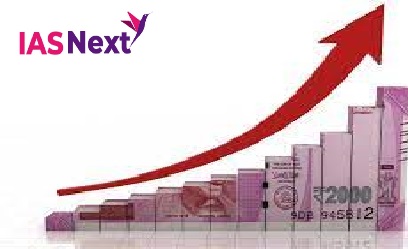CURRENT AFFAIRS
Get the most updated and recent current affair content on Padhaikaro.com
The Duality in India’s Economic Recovery
- IAS NEXT, Lucknow
- 25, Nov 2021

What is the issue?
In the process of recovery of pandemic-induced economic crisis, there’s a gap between rich and poor States due to vaccination levels and between the unemployed and the well-heeled.
What is the status of economic recovery in India?
- The RBI projected real GDP growth of 9.5 %for the FY 2021-22.
- Similar projections have been made by multilateral agencies like IMF and World Bank, projecting GDP growth rate in the range of 8.5-9.5 % indicating a V-shape recovery.
- The optimism is the result of increased consumer confidence and vaccination coverage.
- Google data indicates that the mobility trend across retail, transit, residential, and workplaces is back to its pre-pandemic level.
- Real-time Indicators such as PMI, e-way bills, GST collection, electricity demand, etc. recovered to their pre-pandemic level.
- Industrial output recovered during the quarter ending September 2021 and recorded a growth of 8 % compared with 2020.
- The GST collections grew more than 25% in July, August, September and, October and reached an all-time high of Rs 1.3 lakh crore in October 2021.
- Exports grew 38% in the quarter ending September 2021.
- The stock market is soaring up with a record number of IPOs debuting.
What are the reasons for India’s economic recovery?
- Positive consumer confidence
- Higher vaccination coverage
- Decline in the number of infections
- Fading threat of the new Covid wave
- Increased consumption expenditure
- Festivals boosting the demand
What factors are attributed to the uneven economic recovery?
- Level of vaccination – The higher income States have vaccinated 45-50% of its eligible population but the fully vaccinated population in poorer States remains under 30%.
- Saving glut – A global saving glut (cash hoarding, dead cash, dead money) is a situation in which desired saving exceeds desired investment.
- The pandemic created a saving glut with the top income quintiles leading to reduced consumption and economic uncertainties.
- It is this section of the population that is leading the present recovery.
- Unemployment – The bottom 50 % income quintile suffered permanent loss of jobs and incomes.
- As per CMIE’s consumer pyramid survey, the labour force participation rate has declined from 43% to 39% between March 2020 to September 2021.
- In absolute terms, 1.4 million people have been forced out of the labour force.
- Increased poverty – Around 3.5 million people are unemployed and have stopped looking for jobs coming under the category of discouraged workforce.
- As a result, the absolute number of poor in the country has increased by 76 million between 2011 and 2020.
- Income disparity – The saving glut forces the interest rate to fall and people search for alternative asset classes for a higher return.
- In India, these excess savings are getting channelised into the stock markets and real estate, fuelling asset prices.
- Asset price bubbles make the rich feel even wealthier widening the inequality.
How can the issue be addressed?
- For an even recovery, the economic duality needs to be rectified and the people in the bottom 50% income quintile who are still in doldrums, require income and consumption support.
- The focus must be on addressing the equity concern and speeding up vaccination rates in low-income States.
- Fiscal policy needs to be prioritised over monetary policy.
- Targeted demand push in the form of extension of the free ration scheme, financial support to struggling SMEs and increased outlay for MGNREGA may help sustain the economic recovery.